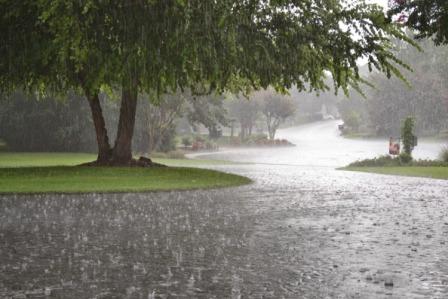During the past couple of months we have witnessed 8% excess rainfall and flooding in several parts of the state. Ever wondered why?
We are just half way into the monsoon season, and the Indian Meteorological Department (IMD) has predicted a total of 94 per cent ‘more-than-excess’ heavy rainfall in India this year.
Relief was expected by the MET department after two years of deficit rainfall. According to this report, low rainfall in 2015 was completely a result of El Niño a weather phenomenon which increases warming in the Pacific Ocean and changes in wind patterns resulting in atmospheric changes worldwide reducing rainfall in the state. In 2015, 14 per cent was recorded as rainfall deficit due to this climate change. Further, 2014 recorded a monsoon rainfall deficit of 12 per cent.
However this monsoon, IMD experts have predicted a decline in the global warming factor and increase in La Nina factor (the exact opposite of El Nino) which is cooler than average sea surface temperatures, hence the drop in temperatures has caused the ‘over above-average’ downpours in India.
Difference between El Nino and La Nina
El Nino and La Nina are caused by the sea-surface temperatures in the tropical part of the Pacific Ocean. These sea-surface temperatures interact with the atmosphere. El Nino refers to warm temperatures whereas La Nina are cooler temperatures affecting the overall climate worldwide.
The cycle of change from warm to cold usually occurs every three to four years known as oscillation. Atmospheric conditions can increase or decrease the temperature of the surface water. El Nino also causes a decrease in the eastward flow of the trade winds carrying rain clouds. Thus resulting in droughts or lesser amounts of rainfall in India. The opposite happens in North and South America where the general climatic conditions are wetter and warmer.
El Nina, on the other hand, causes the warm water in the Pacific to shrink, because the eastbound trade winds strengthen and carry the colder surface water from the east to the west. And this reduces the overall temperature of the surface water. Therefore India has heavy showers and in America the rainfall is reduced, with cooler temperatures.
Global Warming
Global warming plays a pivotal role in El Nino and La Nina, causing drastic changes in weather conditions on a global scale. Severe droughts take place in several countries while others suffer from excessive surface run offs and flooding.
The forces of nature cannot be altered. Human intervention can be catastrophic. Yet, ‘prevention is better than cure’.


